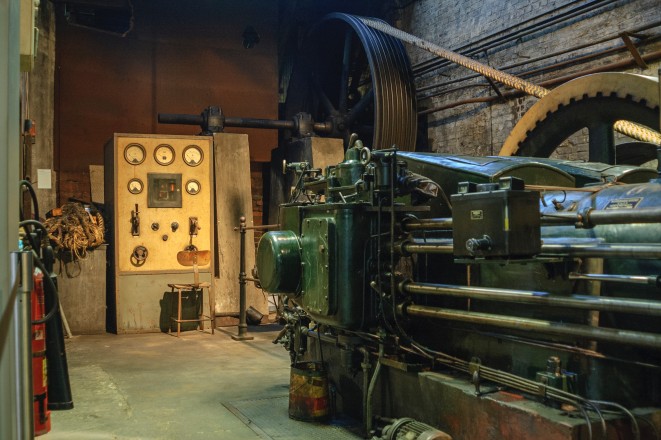
The Secret of the Machines is a poem written by Nobel Laureate Rudyard Kipling as a reflection upon the technological advances that had occurred over the last century, especially with the onset of the Industrial Revolution. Dealing with the themes of power, dependence, prudence and the importance of dealing wisely with a given technology, The Secret of the Machines delivers some important lessons for humankind. The poem was first published in 1911.
The Secret of the Machines | Title of the Poem
The Secrets of the Machines has a rather interesting title. While the poem is written in a first-person narrative format, the title is suggestive of the third person who presumably presents us the “secret” of the machines. While the poem, in effect, is narrated by the machines themselves, the title is presented by the poet-persona who presents us “their” secrets. Also, in line with the content of the poem, the machines are anthropomorphized (give human-like attributes) in the title as well, which suggests that machines could have something of a secret to themselves.
The Secret of the Machines | Summary
The Secret of the Machines highlights the implications of the rising importance of technology in our lives, commenting upon how man-made machines have now come to become an integral part of our world. The various tasks that machines accomplish for humans are enumerated in the poem, showcasing our ever-increasing dependence on them as well as the dark side of this automation of the society as a whole. The poem is written in first-person point of view of the machines who address humans and tell us about their origins, attributes, qualities and capabilities, and also issue a warning towards the end against the damaging consequences that may arise if humans mishandle them or misjudge their nature.
The poem is composed in five stanzas with a rhyme scheme of abab cdcd efef ghgh ijij. This rhyming pattern is known as alternate rhyme scheme, or cross-rhyme.
The Secret of the Machines | Analysis
The Secret of the Machines | Stanza 1
We were taken from the ore-bed and the mine,
We were melted in the furnace and the pit
We were cast and wrought and hammered to design,
We were cut and filed and tooled and gauged to fit.
The first stanza of the poem elaborates upon the origins of the machines and how, step by step, they came into being. They tell us about the production processes and the various treatments they had to undergo before being formed. Metal which is mined from ores and mines is melted in the hot furnace and then moulded in the desired shape and design in which the machines are made. They are beaten by the hammer, cast in the pits and cut, filed and scraped in order to render their body as per the intended use.
A range of poetic device lends a firmness to The Secret of The Machines. The poem opens with “We”. This is a significant point as it is not the perspective of a single machine but that of the entire category, or rather, an entire race of machines speaking to another race – that of the humans. Notice the rhythm of the stanza which is firm, determined, almost mechanical. A sense of order is established by the use of same words at the beginning of each line of the stanza ( We were… we were…We were…We were). This device is known as anaphora is often used in speech and oration.
Also notice the use of conjunction and in a repeated manner to almost overwhelm the reader with details. There are seven ands in stanza one alone! This can especially be seen in line number 4 :
We were cut and filed and tooled and gauged to fit.
This rhetorical device is known as polysyndeton, and is often used to overwhelm the reader with a series of details.
Significant also, is the tone of the words used to describe how the machines were made. Notice the diction, the choice of words by the poet: “taken from”, “melted”, “hammered”, “cut and filed”. All these seem to bear a sense of violence, of force that has been involved in making these machines. The warning of the machines later in stanza 4 is not unrelated to the acts of force which man has used to shape these machines. This imagery of force and violence is not limited to this stanza alone, but will play out in the human world if man misuses the machines he has made.
The Secret of the Machines | Stanza 2
Some water, coal, and oil is all we ask,
And a thousandth of an inch to give us play:
And now, if you will set us to our task,
We will serve you four and twenty hours a day!
Thus, informing us about their evolution, the machines go on to tell us about their ability to relentlessly serve humans, carrying out all their tasks like a diligent employee. All they need to get started with their work is some water, oil and coal- their fuel. Taking very little time to get started- moving their parts for only about a “thousandth of an inch”, they are very keen to serve humanity non-stop without getting exhausted. By rising over the biological needs of humans, it is almost as if they are competing against other workers to serve their masters.
Ranging from factories and huge industrial machines to the tiniest of components on which mechanical watches work, the machines do not demand a lot from their masters. This stanza captures the significance of a radical shift that took place post industrial revolution- the shift from raw animal power to mechanical power.
There is a use of hyperbole in the line “We will serve you four and twenty hours a day” to lay emphasis on the great lengths to which the machines can go while they serve humans. However, this hyperbole is also true to a great extent.
The Secret of the Machines | Stanza 3
We can pull and haul and push and lift and drive,
We can print and plough and weave and heat and light,
We can run and race and swim and fly and dive,
We can see and hear and count and read and write!
The machines can carry out a lot of tasks such as carrying and pulling stuff, lifting things, driving, printing and even ploughing. Their utility pervades all sectors and aspects of human life and they can do almost everything that humans can do. Like humans, they can race on the roads, swim in the waters, fly in the air, dive deep into the sea and even perform intellectual tasks like reading, writing, hearing and counting. Again, anaphora has been used to emphasize their capability (“We can…We can… We can… We can…”) They have mastered all the common human activities, thereby exerting their influence and importance in our lives. Our dependence on them is increasing day by day as we rely on them for even the most menial tasks.
The powers of the machines seem to have no limit as they are capable of everything. And therein lies the danger. In the past, circus masters have often been torn apart by the lions they couldn’t tame.
The Secret of the Machines | Stanza 4
But remember, please, the Law by which we live,
We are not built to comprehend a lie,
We can neither love nor pity nor forgive,
If you make a slip in handling us you die!
In the fourth stanza these machines issue to us a warning and remind us of the fact that the only force governing their actions is the law of physics upon which their entire existence is based. In spite of their ability to completely fulfill all the physical and logical tasks that humans can accomplish; they are found to be lacking when it comes to the humane aspects of man’s being. They are completely devoid of all sentimentality and intuitiveness. They are not equipped to fathom lies and are incapable of exercising all sorts of human emotions such as that of love, pity and forgiveness. The machines then warn the humans to be careful while operating them as any slip-up on their side could prove to be fatal.
The machines have assumed a tone of dominance and supremacy as they address us in this stanza, presenting themselves to be an entity that needs to be feared by humans because they neither forgive nor love, and there is a great possibility of serious harm befalling us lest we fail to exercise prudence in their use. Contrast the passive way in which they we acted upon in the first stanza “We were” to the active effect they can have “We can” on the very fate of the human life, once the processes are set in place. The reliance on machines can prove to be fatal as in the end, the machines are just that – machines. Nothing more, nothing less. This warning indicates that even though they facilitate our work and make our lives easy, over-reliance on them can cause heavy damage. The seemingly limitless powers of the machines can be used for any end and it can have disastrous consequences if it falls into the wrong hands. Remember, this poem was written in 1911. Five years after Kipling wrote this poem, the same machines would be used to kill countless number of innocent lives in the First World War.
The Secret of the Machines | Stanza 5
Though our smoke may hide the Heavens from your eyes,
It will vanish and the stars will shine again,
Because, for all our power and weight and size,
We are nothing more than children of your brain!
This stanza shows the flip-side of mechanization where the machines state that the smoke emitting out of them may temporarily cloud our visions, making us incapable of seeing the damage that has been done. However, this shroud of ignorance shall not last for very long. Sooner or later, humans will see the repercussions of our over- indulgence of technology and we shall realize that these seemingly perfect creations too have their failings. Despite their exceptional abilities, machines cannot surpass the strength of the human mind because they too, after all, are a product of human intelligence and knowledge. Machines have been personified in the last line as “children” of the human brain, as well as in their depiction as the speakers who tell us about themselves and their various abilities. Speaking in such humble tones, the machines thus state that all their might is a gift bestowed upon them by man, and so it is entirely up to man how he uses it. We can either use them judiciously, keeping in mind their adverse effects, or we can let them take over full control of our lives, leading us to the path of destruction.
The chief message that Kipling tries to convey through this poem is that while machines definitely make our lives smoother and easier, we should be very cautious while dealing with them. If we don’t pay heed to the dangers posed by them, they can very easily lead us to a catastrophic end. Regardless of how powerful they are, machines can never replace human skill and intelligence. Our brain is the most powerful machine that exists on this planet and these metallic machines can at the best aid it. In this regard, the poem also has a didactic tone to it. The “secret”, the truth, that Kipling aims to reveal through the voice of these machines is that without humans to create and operate them, these technological advancements hold no value and are absolutely futile. Thus, instead of being dependent on them, we should use them to empower ourselves.
While The Secret of Machines, like every piece of literature, was born in response to the times it had been created in (the culmination of the Industrial Revolution and pre-WWI years in this case), the message it contains is all the more relevant to our times. We, the witnesses of the Fourth Industrial revolution, are increasingly being exposed to technologies advancing at a breakneck speed – with advancements in fields ranging from AI to Cybernetics. In such times when the fine line between man and machine is constantly being blurred, it would do us good to pay heed to what Kipling had to say while he faced the changing times more than a century ago.


